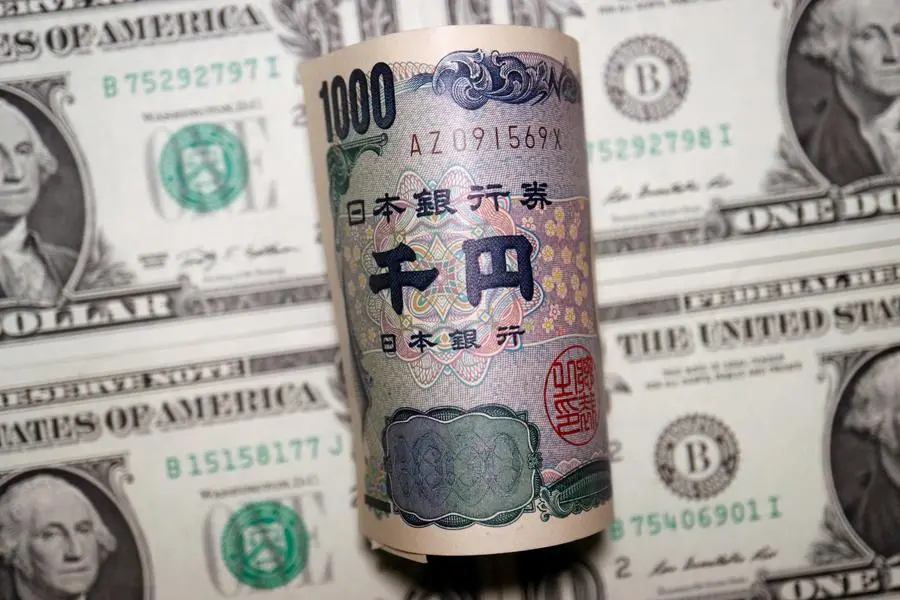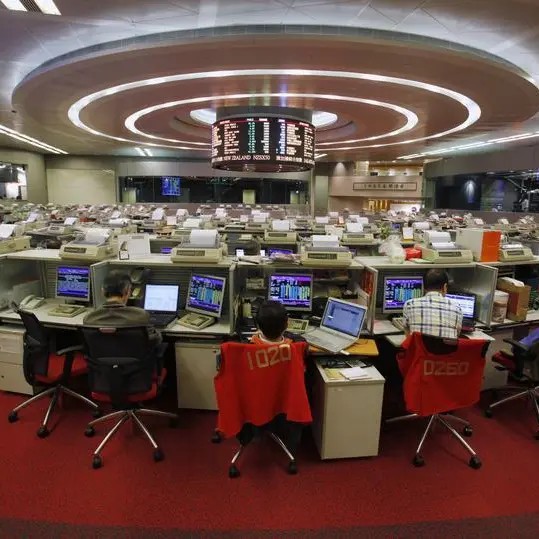PHOTO
Japan spent a record 6.3499 trillion yen ($42.8 billion) on currency intervention this month to prop up the yen, the finance ministry said, with investors keen for clues about how much more the authorities might step in to soften the yen's sharp fall.
The amount slightly undershot the estimates of Tokyo money market brokers who thought Japan had likely spent up to 6.4 trillion yen overall over two consecutive trading days of unannounced interventions on Oct. 21 and 24.
A steep drop in the yen to a 32-year low of 151.94 to the dollar on Oct. 21 likely triggered the intervention on the first of those days.
However, the amount was nearly double the 2.8 trillion yen Tokyo spent last month in its first yen-buying and dollar-selling intervention in more than two decades. The latest intervention records were registered from Sept. 29 to Oct. 27.
The latest interventions helped to trigger an immediate drop in the dollar of more than 7 yen on Oct. 21, and pushed up the yen by 5 yen on Oct. 24 albeit temporarily, but the Japanese currency has since come under renewed pressure.
With solid U.S. consumer spending data focusing attention on persistent inflation and dampening expectations of slower interest rate hikes by the Federal Reserve, while the Bank of Japan remains committed to ultra-low interest rates, the dollar was rising again on Monday, up 1% at 148.45 yen.
Japan's currency intervention data, comprising monthly totals released around the end of each month and daily spending released in quarterly reports, is watched closely for clues on how much more Japan might be willing to spend in its forays into the currency market.
Monday's figures will draw additional scrutiny after the finance ministry refrained from commenting on its apparent actions in the market this month, taking a stealth approach to intervention. It confirmed last month's yen-buying action immediately after it occurred.
But while the markets are keen to examine how much Japan is willing to commit to intervention, there is little doubt that - at least for the foreseeable future - it has sufficient resources to continue stepping into the market.
Indeed, Japan's top currency diplomat, Masato Kanda, has said there was no limit to the authorities' resources for conducting intervention.
Japan held roughly $1.2 trillion in foreign reserves at the end of September, the second biggest after China, about one-tenth of which are held as deposits parked with foreign central banks and the Bank for International Settlements and can be readily tapped for dollar-selling, yen-buying intervention.
Moreover, four-fifths of Japan's total foreign reserves are held as U.S. Treasuries, bought during bouts of dollar-buying intervention at those times when the yen was surging. Those can easily be converted into cash.
Other holdings include gold, reserves at the International Monetary Fund (IMF) and IMF special drawing rights (SDRs), although procuring dollar funds from these assets would take time, ministry officials say. ($1 = 148.4900 yen) (Reporting by Tetsushi Kajimoto; Editing by Edmund Klamann)












